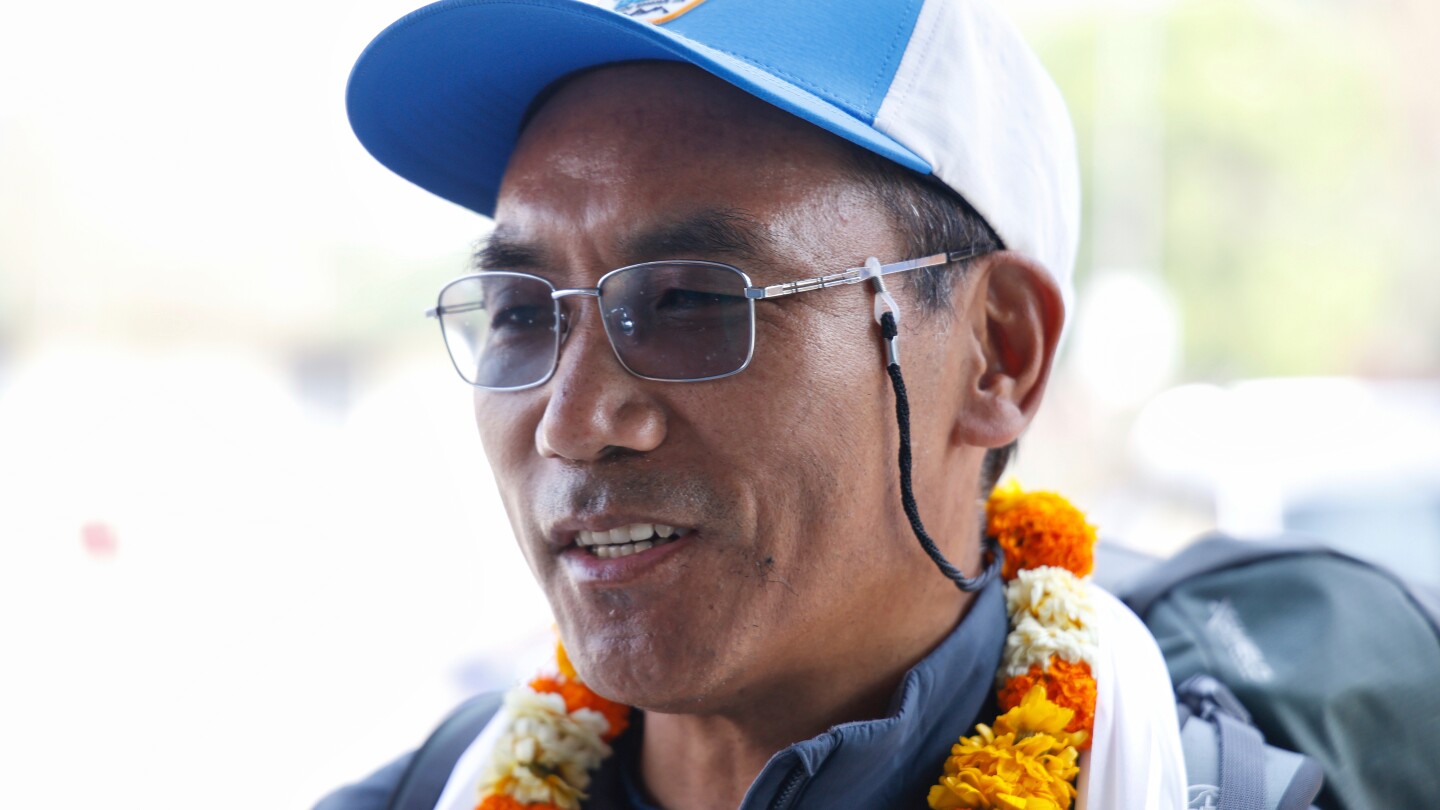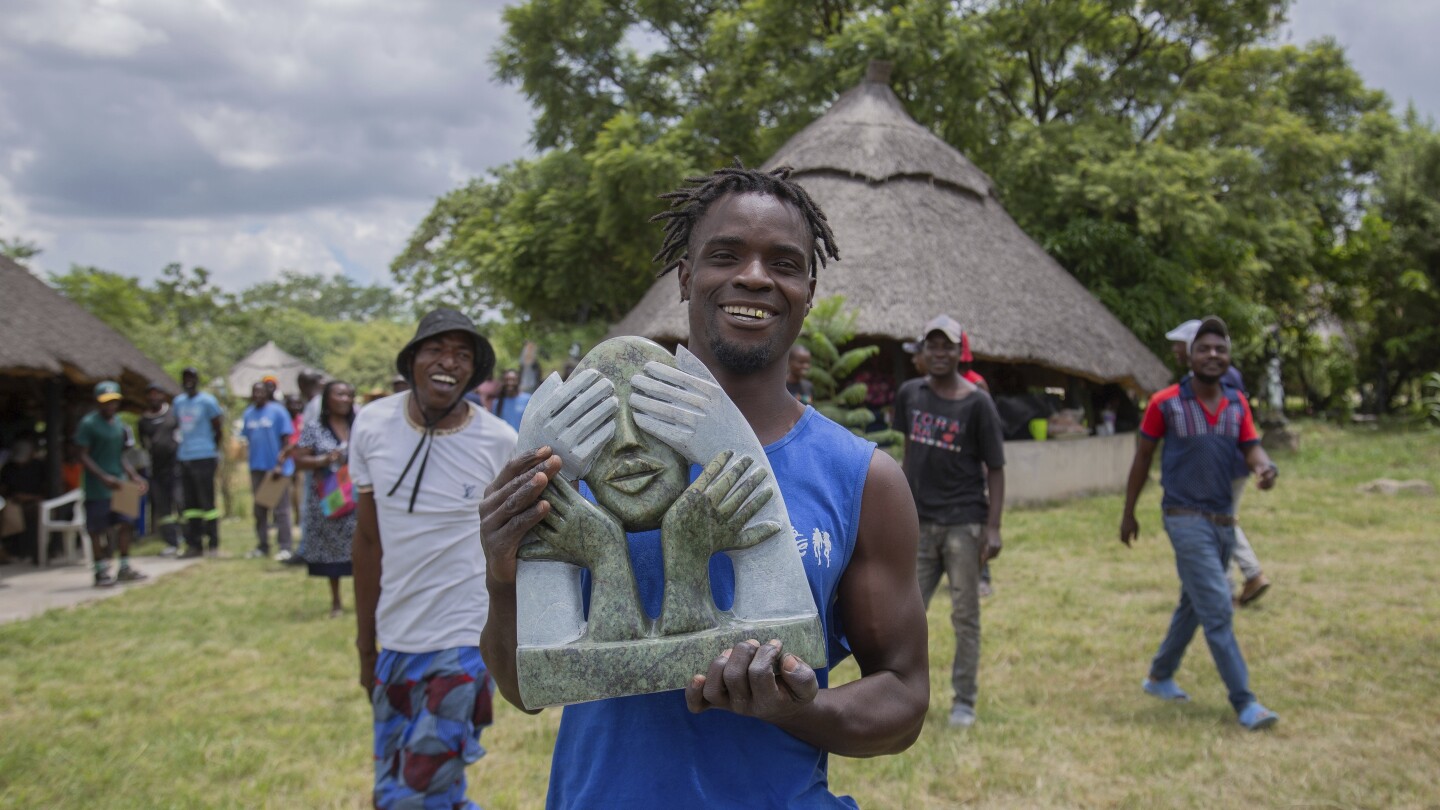Lifestyle
Edmunds: Avoid these five mistakes when buying a used vehicle

It can be a smart money-saving move to buy a used vehicle instead of a new one. The average price gap between new and used vehicles is more than $20,000, according to recent Edmunds’ sales data. But many used-vehicle shoppers make costly mistakes that can be avoided with a little research and preparation. Here are five common mistakes identified by Edmunds’ experts and what you can do to avoid them.
Not taking a thorough test drive
Many shoppers will drive the vehicle but not pay close enough attention to how the vehicle drives. An in-depth test drive can help you determine if there’s anything mechanically wrong with the vehicle. Is there any hesitation from the engine? Are there any clunks as you drive over bumps? These are all things that, if noticed, can help you avoid a used car with a dubious past.
Most newer used vehicles are also equipped with technology features. Check these out as well. Make sure the touchscreen works properly and that you can pair your phone to the vehicle using Apple CarPlay or Android Auto integration if it’s equipped. Also determine what kind of driver aids the vehicle has and observe if they work properly. Features such as blind-spot warning and traffic-adaptive cruise control rely on sensors that can be costly to fix if they’re not working properly.
Not spending money to get a history report or inspection
Never assume the seller knows the vehicle’s history or is being entirely truthful. A used car might look good on the surface and drive well, but it could be hiding a history of accidents, flood damage or odometer fraud. One way to get independent information is to purchase a report from services such as Carfax or AutoCheck.
A vehicle history report can also reveal prior accidents, title issues, rental or fleet vehicle use, and any major recalls or repairs. A car might have been written off as a total loss but later rebuilt and resold — something a history report can flag. You might have to purchase a history report on your own, but many reputable dealerships will provide one for free.
Additionally, have the car inspected by a trusted mechanic for an extra layer of security. Even if the vehicle history report appears clean, underlying mechanical problems may exist. Take that seriously and be prepared to part with $150 to $400 for a prepurchase inspection. This small investment can save you from buying a vehicle with hidden damage or mechanical gremlins.
Focusing only on the monthly payment
One of the biggest mistakes car buyers make is only considering the monthly payment rather than the total cost of the vehicle. Dealers often frame a deal around what you can afford per month, stretching out loan terms to lower the payment while increasing the total amount you’ll pay in interest.
Instead, focus on the vehicle’s total price, interest rate and loan term. A lower monthly payment might seem appealing, but if it means paying thousands more over time, it’s not a good deal. Be sure to run the numbers and compare loan options before committing.
Not shopping around for a loan
Many buyers — especially those who are rushed — assume that dealer financing is their best or only option, but that’s often not the case. Dealers may mark up interest rates for profit, leaving you paying more than necessary.
Before visiting the dealership, check loan rates at your bank or credit union. Preapproval from an external lender not only gives you negotiating power but also ensures you’re getting the best possible rate. Dealer financing might still be the best deal, but you’ll only know for sure if you’ve compared multiple options.
Making an emotional purchase instead of a logical one
Many used-car shoppers let their emotions influence a car purchase. It’s understandable. Maybe they’ve always wanted a certain type of car or maybe they feel rushed and anxious because their current vehicle was totaled in an accident and they need an immediate replacement. But buying the wrong vehicle for the wrong reasons can result in buyer’s remorse.
Take the time to research different makes and models, compare features, analyze annual fuel costs and locate the lowest prices. It’s also wise to use websites such as Edmunds to read consumer reviews and look up reliability ratings. Bringing a trusted friend or family member to provide an objective perspective on the vehicle you want to buy is also a great way to avoid feeling trapped.
Edmunds Says
Buying a used car will be much less stressful if you avoid these common mistakes. By verifying the car’s drivability and history, getting the right loan and terms, and considering the total cost, you can make a confident and informed decision.
____
This story was provided to The Associated Press by the automotive website Edmunds. Josh Jacquot is a contributor at Edmunds.
Lifestyle
Famed Sherpa guide will attempt to climb Mount Everest for a 31st time and break his own record

KATHMANDU, Nepal (AP) — One of the greatest mountain guides will attempt to scale the world’s highest peak for the 31st time — and possibly the 32nd time as well — and break his own record.
Kami Rita, 55, flew to Mount Everest on Sunday from Kathmandu to lead a group of climbers who will try to reach the 8,849-meter (29,032-foot) summit during the spring climbing season.
“I am mentally, emotionally and physically prepared to climb the mountain,” Kami Rita told The Associated Press at Kathmandu’s airport. “I am in my top physical condition right now.”
He holds the record for the most successful ascents of Mount Everest at 30 times. In May last year he climbed the peak twice.
“My first priority is to get my client to the summit of the peak. Then I will decide on whether I will climb the peak more than one time during the season. It depends on the weather and conditions on the mountain,” he said.
His closest competitor for the most climbs of Mount Everest is fellow Sherpa guide Pasang Dawa, who has made 27 successful ascents of the mountain.
Kami Rita first climbed Everest in 1994 and has been making the trip nearly every year since. He is one of many Sherpa guides whose expertise and skills are vital to the safety and success each year of foreign climbers aspiring to stand on top of the mountain.
His father was among the first Sherpa mountain guides. In addition to his Everest climbs, Kami Rita has scaled several other peaks that are among the world’s highest, including K2, Cho Oyu, Manaslu and Lhotse.
According to Nepal’s Department of Tourism, 214 climbers have been issued permits to attempt Mount Everest from the Nepali side of the peak in the south this climbing season, which ends in May. Most climbing of Everest and nearby Himalayan peaks is done in April and May, when weather conditions are most favorable.
Everest was first climbed in 1953 by New Zealander Edmund Hillary and Nepali Sherpa Tenzing Norgay.
Lifestyle
Marijuana holiday 4/20 coincides with Easter and Passover this year. Here’s what to know

Marijuana culture’s high holiday, known as 4/20, falls this year on Easter Sunday, as well as the last day of Passover, meaning cannabis fans can celebrate in some unusual ways, including an “Easter nug hunt” in Los Angeles, kosher-style THC gummies in New York and a “blaze and praise” drag brunch in Portland, Oregon.
“It seemed appropriate with egg prices today that we’d be searching for something else,” said Brett Davis, who runs the marijuana tour company Weed Bus Los Angeles and organized the “Easter nug hunt.”
Here’s a look at 4/20’s history and how it’s being celebrated this year:
Why 4/20?
The origins of the date, and the term “420” generally, were long murky.
Some claimed it referred to a police code for marijuana possession or was derived from Bob Dylan’s “Rainy Day Women No. 12 & 35,” with its refrain of “Everybody must get stoned,” 420 being the product of 12 times 35.
But the prevailing explanation is that it started in the 1970s with a group of bell-bottomed buddies from San Rafael High School, in California’s Marin County north of San Francisco, who called themselves “the Waldos.”
A friend’s brother was afraid of getting busted for a patch of cannabis he was growing in the woods at nearby Point Reyes, so he drew a map and gave the teens permission to harvest the crop, the story goes.
During fall 1971, at 4:20 p.m., just after classes and football practice, the group would meet up at the school’s statue of chemist Louis Pasteur, smoke a joint and head out to search for the weed patch. They never did find it, but their private lexicon — “420 Louie” and later just “420” — would take on a life of its own.
The Waldos saved postmarked letters and other artifacts from the 1970s referencing “420,” which they now keep in a bank vault, and when the Oxford English Dictionary added the term in 2017, it cited some of those documents as the earliest recorded uses.
How did 4/20 spread?
A brother of one of the Waldos was a close friend of Grateful Dead bassist Phil Lesh, as Lesh once confirmed in an interview with the Huffington Post, now HuffPost. The Waldos began hanging out in the band’s circle, and the slang term spread.
Fast-forward to the early 1990s: Steve Bloom, a reporter for the cannabis magazine High Times, was at a Dead show when he was handed a flyer urging people to “meet at 4:20 on 4/20 for 420-ing in Marin County at the Bolinas Ridge sunset spot on Mt. Tamalpais.” High Times published it.
“It’s a phenomenon,” one of the Waldos, Steve Capper, now 69, once told The Associated Press. “Most things die within a couple years, but this just goes on and on. It’s not like someday somebody’s going to say, ‘OK, Cannabis New Year’s is on June 23rd now.’”
While the Waldos came up with the term, the people who made the flier that was distributed at the Dead show — effectively turning 4/20 into a holiday — remain unknown.
How is it celebrated?
With weed, naturally.
In New York City, the cannabis brand Tokin’ Jew is advertising a kosher-style THC gummy line, “Tokin’ Chews,” designed to meet dietary restrictions for Passover.
Davis said he expected 300 people to partake in the West Hollywood Easter nug scavenger hunt this weekend, aided by a mobile app leading them through participating dispensaries, trivia challenges and “stoner activities.” There is a $500 cash prize.
In Portland, Bar Carlo is hosting the “blaze and praise” drag brunch. Cannabis consumption isn’t allowed onsite — “Please blaze before you arrive or go for a walk in the neighborhood in between performances,” the event listing reads — but there will be a door-prize gift basket from a local dispensary.
Bar owner Melinda Archuleta said the brunch is a dry run for hosting Pride month events in June. She herself doesn’t care much for marijuana, but as a Mexican American who has been influenced by Catholicism, she is interested in seeing the two cultures melded “in a cheeky way.”
“I’m really looking forward to seeing how the queens do it,” Archuleta said. “We’ve obviously given them carte blanche to do whatever they want — it’s 21 and up — so it doesn’t matter if it’s sacrilegious or borderline offensive.”
There are bigger celebrations, too, including the Mile High 420 Festival in Denver and one put on by SweetWater Brewing in Atlanta. Hippie Hill in San Francisco’s Golden Gate Park historically has attracted massive crowds, but the gathering was canceled for a second straight year, with organizers citing a lack of financial sponsorship and city budget cuts.
Just north of the Bay Area, Lagunitas Brewing in Petaluma, California, releases its “Waldos’ Special Ale” every year on 4/20 in partnership with the term’s coiners.
4/20 also has become a big industry event, with vendors gathering to try each other’s wares.
What about the politics?
There are 24 states that allow recreational marijuana and 14 others allowing it for medical purposes. But the movement recently has suffered some setbacks, with voters in Florida, North Dakota and South Dakota deciding not to adopt legalization measures last November.
Several states also have cracked down on intoxicating products derived from hemp, which have been widely sold even in prohibition states thanks to a loophole in the federal Farm Bill.
Marijuana remains illegal under federal law. As a candidate, President Donald Trump said he would vote for Florida’s amendment and signaled support for reclassifying marijuana as a less dangerous drug, a process started by the Biden administration.
But his administration has not indicated cannabis policy is a priority. A fact sheet released by the White House last month complained that marijuana decriminalization in Washington, D.C., was an example of “failed policies” that “opened the door to disorder.”
A bipartisan group of senators last week reintroduced legislation that would ensure states can adopt their own cannabis policies and remove certain financial hurdles for the industry, such as letting entities deduct business expenses on their taxes.
Charles Alovisetti, a lawyer with the cannabis industry law firm Vicente LLP, said he hopes the administration will push forward with marijuana reform at the federal level, saying “it does align with some of their policy objectives — namely reducing criminal activity, or cartel activity.”
He also encouraged advocates to keep pushing, noting some measures such as improving banking access for marijuana businesses might pass as part of larger legislative packages.
“You continue speaking up, even if the political momentum isn’t there,” Alovisetti said. “It’s only possible if you stay in everyone’s ear.”
Lifestyle
Zimbabwe’s stone carvers seek a revival as an Oxford exhibition confronts a British colonial legacy

CHITUNGWIZA, Zimbabwe (AP) — A pair of white hands blinding a Black face. A smiling colonizer with a Bible, crushing the skull of a screaming native with his boot. Chained men in gold mines, and a pregnant woman.
These stone sculptures from Zimbabwe will take center stage at an upcoming exhibition at Oxford University in Britain, aiming to “contextualize” the legacy of British imperialist Cecil John Rhodes with depictions of religious deception, forced labor and sexual abuse.
Rhodes conquered large parts of southern Africa in the late 19th century. He made a fortune in gold and diamond mining and grabbed land from the local population. His grave lies under a slab of stone atop a hill in Zimbabwe.
Oxford’s Oriel College, where the exhibition will be held in September, is a symbolic setting. A statue of Rhodes stands there despite protests against it since 2015. Rhodes, who died in 1902, was an Oriel student who left 100,000 pounds (now valued at about 10.5 million pounds, or $13.5 million) to the school. His influence endures through a scholarship for students from southern African countries.
For Zimbabwean stone carvers at Chitungwiza Arts Center near the capital, Harare, the exhibition is more than an opportunity for Western audiences to glimpse a dark history. It is also a chance to revive an ancient but struggling art form.
Stone sculpture, once a thriving local industry, has suffered due to vast economic challenges and declining tourism.
“This will boost business. Buyers abroad will now see our work and buy directly from the artists,” said sculptor Wallace Mkanka. His piece, depicting the blinded Black face, was selected as the best of 110 entries and will be one of four winning sculptures on display at Oxford.
Zimbabwe, meaning “House of Stone,” derives its identity from the Great Zimbabwe ruins, a 1,800-acre Iron Age city built with precision-cut stones delicately stacked without mortar. It is a UNESCO World heritage site.
The southern African country has long used stone sculpture as a form of storytelling to immortalize history. The craft survived close to a century of colonial rule that sought to erase local traditions, religion and art forms.
It thrived internationally instead. Thousands of pieces were plundered from Africa. Some later became subjects of repatriation campaigns. Others became prized by tourists and collectors. A permanent collection of 20 Zimbabwean stone sculptures is displayed in a pedestrian tunnel at Hartsfield-Jackson Atlanta International Airport, one of the world’s busiest.
At its peak following independence, Zimbabwe’s stone sculpture industry thrived, with local white farmers purchasing pieces for their homes and facilitating international sales.
“Customers were everywhere. They would pay up front, and I always had a queue of clients,” recalled Tafadzwa Tandi, a 45-year-old sculptor whose work will feature in the Oxford exhibition.
However, the industry has struggled over the past two decades.
Zimbabwe’s global image suffered after controversial land reforms more than two decades ago displaced over 4,000 white farmers to redistribute land to about 300,000 Black families, according to government figures. Late ruler Robert Mugabe defended the reforms as necessary to address colonial-era inequities, but they had unintended economic consequences.
“Many of our customers were friends of the farmers. That is where the problem originated from,” said Tendai Gwaravaza, chairman of Chitungwiza Arts Center.
At the center, the sound of grinders filled the air as sculptors carved. Hundreds of finished pieces, ranging from small carvings to life-sized sculptures, waited for buyers.
“The only solution now is to get out there to the markets ourselves. If we don’t, no one will,” Gwaravaza said.
The Oxford exhibition represents such an opportunity for exposure, he said.
It is the brainchild of the Oxford Zimbabwe Arts Partnership, formed in response to the “Rhodes Must Fall” campaign during the Black Lives Matter protests in the U.S.
The group, consisting of Zimbabwean artists, an Oxford alumnus and a professor of African history, initially envisioned a larger project titled “Oxford and Rhodes: Past, Present, and Future.” It included enclosing Rhodes’ statue in glass, installing 100 life-size bronze statues of African liberation fighters and creating a collaborative sculpture using recycled materials to represent the future.
However, the project required an estimated 200,000 pounds, far beyond available resources. Eventually, Oriel College provided 10,000 pounds for a scaled-down exhibition.
“It’s still my hope that one day it could happen, but for now we have just accepted something very small to make a start and to do something,” said Richard Pantlin, the Oxford alumnus and OZAP co-founder.
___
For more on Africa and development: https://apnews.com/hub/africa-pulse
___
The Associated Press receives financial support for global health and development coverage in Africa from the Gates Foundation. The AP is solely responsible for all content. Find AP’s standards for working with philanthropies, a list of supporters and funded coverage areas at AP.org.
-

 Sports2 days ago
Sports2 days agoAaron Rodgers ‘not holding anybody hostage’ as he decides his future, retirement a possibility
-

 Education2 days ago
Education2 days agoHarvard’s battle with the Trump administration is creating a thorny financial situation
-

 Europe2 days ago
Europe2 days agoTrump’s ‘lone ranger’: How Steve Witkoff became the defacto point man on America’s foreign policy challenges
-

 Middle East24 hours ago
Middle East24 hours agoTunisian court hands opposition figures lengthy jail terms | Human Rights News
-

 Conflict Zones2 days ago
Conflict Zones2 days agoTrump says US may ‘pass’ on helping end war if Russia, Ukraine resist deal | Russia-Ukraine war News
-

 Conflict Zones2 days ago
Conflict Zones2 days ago‘How do I live like this?’ asks Gaza boy who lost arms in Israeli attack | Gaza News
-

 Europe21 hours ago
Europe21 hours agoVance, Vatican officials engage in ‘exchange of opinions’ over migrants
-

 Europe2 days ago
Europe2 days agoRussia lifts terror group designation on Afghanistan’s Taliban




